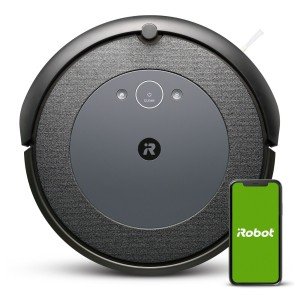30 Inspirational Quotes For Robot Vacuum Cleaner
The Rise of Robot Vacuum Cleaners in Industrial Settings
In recent years, the landscape of industrial cleaning has experienced a considerable transformation with the intro of robot vacuum cleaners. smart vacuum cleaner automated devices are not simply a novelty for homes; they have actually gotten traction in storage facilities, making plants, and other industrial environments. smart vacuum out the performance, benefits, and factors to consider of robot vacuum cleaners within the industrial context, while addressing some frequently asked concerns.
What are Robot Vacuum Cleaners?
Robot vacuum cleaners are automated cleaning devices equipped with sophisticated sensing units and technology that allow them to browse around spaces, identify dirt, and vacuum surface areas without direct human intervention. In top robot vacuum , they are developed to deal with a variety of particles types, assist in regular cleaning schedules, and enhance general operational effectiveness.
Table 1: Key Features of Industrial Robot Vacuum Cleaners
Feature
Description
Navigation
Uses LiDAR or camera-based navigation for accurate mapping.
Size and Design
Compact and robust design to suit tight spaces and hold up against tough environments.
Self-Charging
Automatically go back to its docking station for recharging.
Dustbin Capacity
Larger dustbin suited for industrial debris sizes and volumes.
Programming
Can be set for scheduling and particular cleaning tasks.
Information Collecting
Equipped with sensors to collect data for maintenance and cleaning analysis.
Advantages of Robot Vacuum Cleaners in Industrial Settings
The adoption of robot vacuum comes with a myriad of benefits:
Increased Efficiency:
- 24/7 Operation: Unlike human cleaners, robots can run around the clock, contributing to constant cleanliness without downtime.
- Time-Saving: Automated cleaning enables workers to concentrate on core jobs rather than cleaning responsibilities.
Expense Savings:
- Labor Costs: Maintaining a robot vacuum can minimize the requirement for a large cleaning personnel, decreasing overall labor costs.
- Operational Efficiency: With enhanced cleanliness and lowered downtime due to maintenance issues, companies can save money on operational costs.
Improved Safety:
- Reduced Risk: By decreasing the human participation in dangerous cleaning environments, the threat of mishaps is lessened.
- Constant Cleaning: Robot vacuums make sure that locations are regularly cleaned, decreasing slip dangers and unhealthy environments.
Increased Flexibility:
- Customizable Cleaning Routes: These devices can be configured to clean specific locations or floors, adapting to changing industrial layouts.
- Range of Surfaces: Industrial robot vacuums can handle different floor covering types, from concrete to tiles, making them flexible.
Ecological Impact:
- Sustainable Cleaning Solutions: Many models use minimal water and eco-friendly cleaning options, aiding in corporate sustainability efforts.
Table 2: Industrial Applications of Robot Vacuum Cleaners
Industry
Application
Manufacturing
Cleaning assembly line and assembly areas.
Warehousing
Maintaining clean and orderly storage areas.
Food Processing
Guaranteeing tidiness in delicate locations to meet health standards.
Pharmaceuticals
Keeping ultra-clean environments for production.
Logistics and Distribution
Keeping paths clear for effective operation.
Obstacles and Considerations
While the benefits are substantial, companies must also think about several difficulties:
- Initial Investment: The in advance expenses of purchasing industrial robot vacuum can be substantial, though long-term cost savings might offset this expense.
- Repair and maintenance: Regular maintenance is necessary to keep the robotic systems operating optimally, and repairs can sustain additional costs.
- Combination: Businesses might need to integrate these devices into existing workflows, which can require time and change.
- Training and Support: Staff might require training to efficiently handle these devices, particularly when repairing or shows is required.
Frequently Asked Questions About Robot Vacuum Cleaners in Industrial Settings
1. How much do industrial robot vacuum cleaners cost?
The cost can vary from a couple of thousand to 10s of countless dollars, depending on specifications, features, and brand.
2. What kinds of surfaces can they clean?
Robot vacuum cleaners are suitable for different surfaces including carpets, tiles, concrete, and even some wooden floors.
3. How do they navigate complicated industrial environments?
The majority of industrial robot vacuums make use of innovative navigation systems like LiDAR, electronic cameras, and sensors to map out and adjust to their environments for efficient cleaning.
4. Can they clean large areas without human intervention?
Yes, industrial robot vacuums are developed to tidy substantial locations with pre-programmed routes and schedules, efficiently operating autonomously.
5. Are these robots ecologically friendly?
Many models prioritize performance and lower water use, making them a more eco-friendly cleaning alternative compared to standard techniques.
The introduction of robot vacuum cleaners into industrial environments represents an amazing advancement in cleaning innovation. With their ability to improve efficiency, reduce labor expenses, and preserve safety, these automated systems are leading the way for smarter and cleaner industrial operations. While difficulties might exist, the long-term advantages and technological advancements are motivating for industries looking for to improve their cleaning protocols. As technology continues to develop, we can anticipate further developments in robot vacuum that will transform industrial cleaning practices even more.
